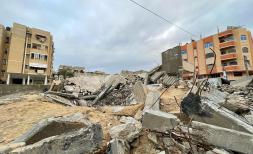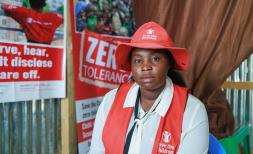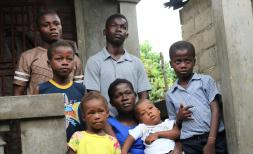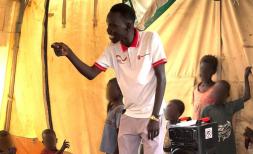Getting granular with data: New estimates of the dual impacts of poverty and climate risk
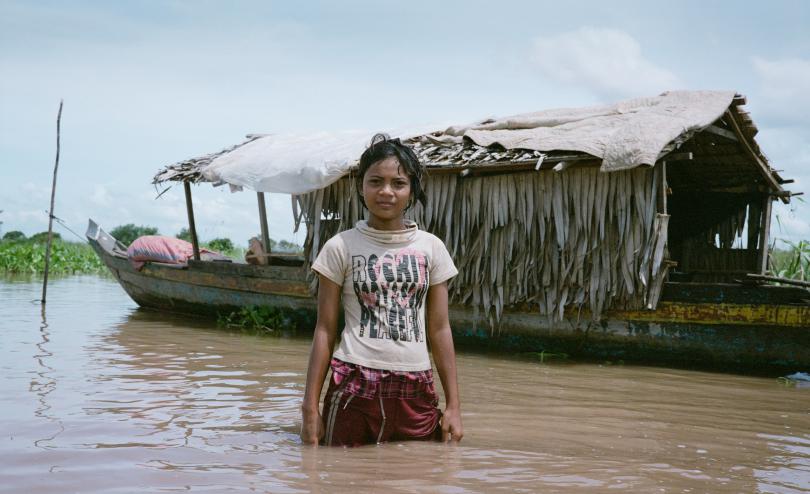
Chenla, 15, stands in the water for a portrait near her boat house, Kompong Thom province, Cambodia.
“Children or poor families are the most affected negatively from climate change because they don’t have the ability to handle the huge dangers.” This insight was shared by a 14-year-old boy from Gaza as part of Save the Children’s biggest-ever global consultation with children, engaging over 54,000 children from 41 countries on the topics of climate change and inequality.
To better understand how many children across the world are affected by this dual poverty and climate risk, we conducted new data analysis, published in our new report Generation Hope. Our analysis found that 774 million children globally – one out of every three children – both live in poverty and are profoundly impacted by the climate crisis. And while the majority of this burden falls on poorer countries (with the vast majority living in South Asia or Sub-Saharan Africa), more than 100 million children live in richer countries, some in the most prosperous countries in the world.
Understanding how different risks overlap and intersect
The vast majority of global databases and analyses of development and child rights data focus on one particular problem or outcome: extreme poverty, out-of-school children, mental health, and so on. But we live in times of overlapping crises – climate change, conflict, COVID-19, cost of living. Rather than looking at issues in isolation, we should therefore look for data which help us to understand the interplay between the different factors and approach problems more holistically.
Understanding the magnitude of the problem
Our analysis considers the question of how many children are both living in poverty and face extreme climate risks. First, we analysed multidimensional child poverty globally, estimating the proportion of children severely deprived of good healthcare, nutrition, education, housing, water or sanitation. We drew on a wide range of available datasets and approaches to cover as much of the global population of children as possible (our methodological note describes this in much more detail). We estimate that 954 million children – more than 1 out of 4 children globally – are living in poverty.
Second, we wanted to understand how many children are impacted by extreme climate events, such as heatwaves, cyclones, flooding, water scarcity, wildfires or crop failure. With support of the BCLIMATE group at the Vrije Universiteit Brussel, we used global climate models to estimate that more than 1.8 billion children – four out of five – experience at least one extreme climate event per year.
These numbers are hugely concerning in their own right: regularly experiencing the manifestations of the climate crisis or growing up in poverty will have profound impacts on children’s futures, their mental and physical health, and their broader well-being. But even more worrying is the sheer magnitude of the double burden: 774 million children globally live in poverty and at the same time are experiencing at least one extreme climate event per year. Most of those children live in low- (197 million) and lower-middle income countries (456 million), but children in richer countries are affected by this double burden as well: 93 million children live in upper middle-income countries and 28 million in the world’s most affluent countries.
Getting granular
We derived our analysis from subnational data for the first time, digging beneath the surface of national averages in an attempt to get a more accurate picture of the risks children are facing. This allowed us to avoid the problem of national averages masking significant inequalities within countries. If we’d only used national averages of poverty or climate risk rates, we would not know if poor regions within a country are also those most at risk of extreme climate events. Subnational level data allowed us to build a much more accurate picture, and was available for most countries (usually for the first administrative level down, such as states or provinces), effectively dividing up the world into more than 2,000 regions.
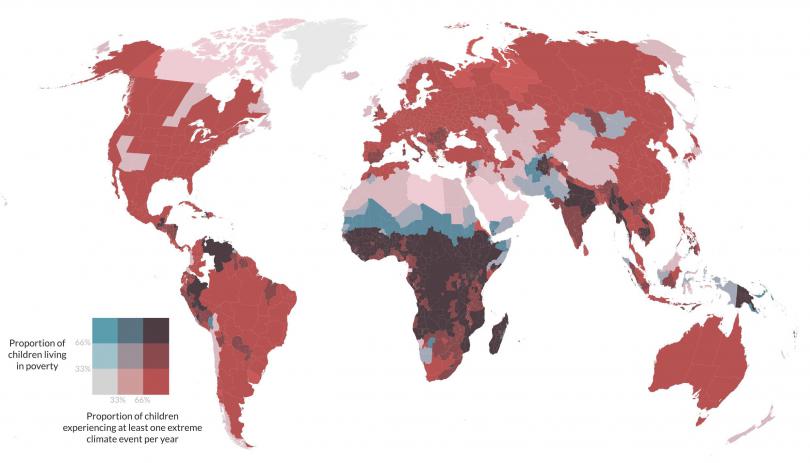
Shades of blue indicate a high proportion of children living in multidimensional poverty (over a third). There are still children who experience high climate risk in many of these countries, but the proportion is less than a third. Shades of red show that climate risks are more prevalent than poverty. Dark purple indicates where both poverty and high climate risk are highly prevalent.
Conducting more granular analysis not only offers methodological advantages, but also helps provide more relevant information for national policy makers and advocates. It allows us to compare different subnational regions within a country, with potentially important implications for policy design, such as the design of shock-responsive social protection systems or determining where investments in climate adaptation, resilience and anticipatory action are needed most. We are planning to make most of this data available in the near future on an upgraded version of GRID, Save the Children’s Child Inequality Tracker, in addition to other data on overlapping risks faced by children across the globe, including conflict.
Mind the gap
This analysis is another reminder why it is so important to move beyond national averages and to invest in disaggregated data, both by different subnational units as well as by other group-based inequalities (such as gender, disability, and socio-economic status). Doing this effectively will depend on more frequent and comparable household surveys (a major challenge during COVID-19) as well as better disaggregation of administrative data. Despite progress in recent years, many global databases still focus largely on national level averages and disaggregated data is still often old or not available (especially in poorer countries and fragile contexts).
Often, we get the most valuable insights when we can bring different datasets together. This requires data to be harmonised to agreed standards so that data users can easily combine and compare it, but this often isn’t done, especially with subnational datasets. Governments, data scientists and researchers must push to expand the quality and use of more granular, combined datasets. Success would unlock considerable insights for better policies and programmes with significant potential to advance children’s rights.
Did you find this research insightful? Go and take a look at our new report for more information on the dual impact of the climate crisis and poverty.
